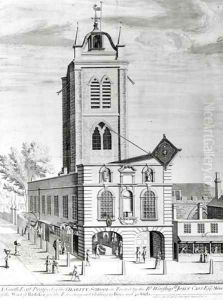John Sturt Paintings
John Sturt was an English engraver, born in 1658. He is best known for his work in the late 17th and early 18th centuries. Sturt learned the art of engraving under the tutelage of Robert White, a distinguished engraver of the time. He developed a reputation for his intricate work, particularly in the field of book illustration. Sturt's engravings were characterized by their fine detail and the use of a technique known as stippling, which involves creating images with small dots to achieve tonal variations.
Throughout his career, Sturt contributed illustrations to numerous books, including religious texts, which were highly regarded at the time. One of his most notable works was the engraving of the 'Lord's Prayer,' which he executed on a silver plate. He also engraved the 'Common Prayer' and 'The Book of Common Prayer' entirely on silver plates, which were commissioned by Queen Anne for her chapel. These works highlighted his skill in miniature engraving, a craft that demands great precision and control.
In addition to religious texts, Sturt engraved portraits, maps, and heraldic designs. He collaborated with prominent printers and authors of his era, which helped him secure a stable position in the competitive field of printmaking. Despite his success, John Sturt's life was marked by financial difficulties, and he died in relative obscurity in 1713. His contributions to the art of engraving, however, have been recognized posthumously, and his works remain a testament to the skill and craftsmanship of engravers during the Baroque period in England.
